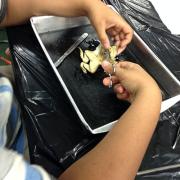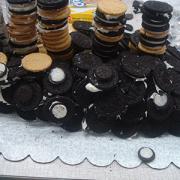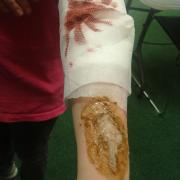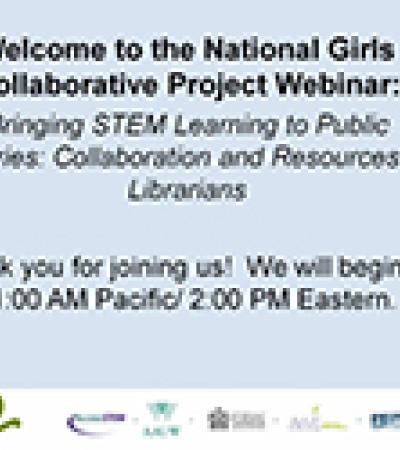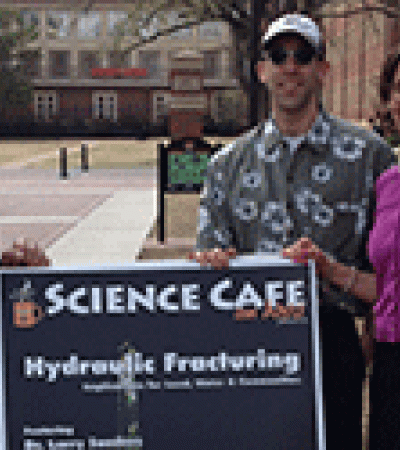Skeleton Key Adventure Club gives kids ages 7 through 12 a monthly, hands-on science, technology, engineering and math (STEM) activity to attend at the library from September through April. Participants earn an actual skeleton key to take home and add to their collection for each session they attend.
Advanced Planning
We wanted to increase our programming for kids at the elementary age level, especially those who might shy away from traditional library programs or sedentary activities. While we wanted the program series to be educational, we also needed it to be high interest to attract the most reluctant of readers, especially boys. We looked at "boys only" clubs being held by other public libraries and gained from their expertise, though in the end, we decided not to limit our club by gender. Our director and children's librarian worked out the details and launched the initial year of programming.
With a gender-neutral club in mind, we chose the name “Skeleton Key” with the simple reasoning, “Who wouldn’t want to earn something as cool as a skeleton key?” This has proven to be true! Kids are very motivated to earn their keys by attending and participating. As the club went on, we noticed that the most popular topics (gross, explosive, and the like) were actually science-oriented. With the increased educational emphasis on STEM at a state and national level, we dedicated Skeleton Key to these activities.
Some topics, of course, we can present on our own with a little help from Google and Pinterest; librarians tend to know a bit about everything! If I feel confident about the material, I do the presentation myself. If not, I look for someone who can help out, either for no cost or low cost. I almost feel guilty at how easy it has been to attract presenters! One local middle school teacher, for instance, came to me to ask if she could teach a session on dissection. We were only too happy to agree. Another volunteer is the microbiologist father of two girls who participate. Yet another is a science and engineering teacher who will lead our “Squishy Circuits” session this month. We have purchased the components and will do the prep work of making the conductive and insulating doughs; he will provide the instruction and know-how.
When we did wound care, we brought in an AmeriCorps worker from the local Red Cross. In this case, she not only provided the expertise, but also many of the bandaging supplies. To make this session more interesting, we followed up the actual first-aid instruction with 30 minutes of “fake wounds” and bandages so that each tween could emerge from the session with not only a skeleton key, but also the look of a street fighter. Kids loved giving themselves big Vaseline and cocoa powder wounds, then bandaging themselves up. We did warn the parents ahead of time so no one would faint when their child came out looking ambulance-ready. (For a full list of program topics, view the list under Attachments at right.)
Marketing
In addition to our usual in-house paper fliers, we advertised on our website, Facebook page and Twitter account, via the local schools and homeschool groups, and through word of mouth. This club has gained a loyal following that helps spread the word to their friends and family. By this point we scarcely need to advertise, though of course we still do.
Many of the kids in this program come from our family program for children ages 4 to 8, Sparkplugs, where these type of discussions are supported over the well-balanced snack that families eat together. As families started transitioning from Sparkplugs to Skeleton Key we have discovered that dads naturally follow along and participate whenever possible. It seems they are as invested in the program and the topics as their kids are. We don’t discourage moms, but we seem to naturally get dads.
Budgeting
Our director is of the mind that children's programming can be improved by spending money on outside expertise or materials when necessary. This is one of those programs that can definitely benefit from unusual expenses such as dissection-ready sheep hearts, LED components and museum educators' time.
We try to cut costs as much as possible by utilizing local teachers and other professionals who enjoy sharing their expertise for free, but some sessions require someone who needs to be paid for their time and expertise. Because of other programming we have developed over the years, our relationships with area museums have grown. These educators charge us the fee their own institution requires, which is sometimes as low as $50 but often in the range of $125 plus mileage. Sometimes other presenters come from recommendations by other librarians or teachers, and fees for these vary.
When I plan each year’s programs, I try to balance out those that cost next to nothing with those that cost more. This school year our biggest expenses will be the “Squishy Circuits” electronic components, and the time and expertise of the museum educator leading “Chemical Reactions.” For both of these, it seemed wise to get quality parts, as well as people who really know what they are doing. To keep total costs down, I will attempt to do the rest of the year on a shoestring.
Day-of-event Activity
We use a large meeting room for Skeleton Key. We set up tables and chairs and/or a presentation space in the front of the room. Although we started with two staff members prepping for this event, we now only need one to prepare and implement the program.
Program Execution
We begin each Skeleton Key by dimming the lights and doing our "Skeleton Key Adventure Club" chant, which simply consists of a call-and-response repetition of the words "Skeleton Key Adventure Club," with steadily decreasing volume, until the last call-and-response is a whisper. At this point, our guest presenter hits a gong. This is done for the sake of having a ritual that not only focuses group energy but also is perceived as special and cool. Then our presenter for the month is introduced and the STEM activity begins. Activities have included:
- Wound care and first aid
- Dissection
- Science fair clinics
- Paper rocket construction
- Live animal presentations
At the end of the hour, participants do the secret handshake with the librarian and receive their skeleton key for attending and participating. We generally have about 30 kids, and parents often stay of their own volition because they are so interested. (For more information about program execution, watch the video under Videos and Images at right.)
We have not done an official evaluation of the program series, but we feel we are on the right track because of the program's popularity. One thing we particularly enjoy seeing is the number of dads who stay to participate simply because they are having fun and don't want to miss out. We also take pride in the kids who come into the program wearing lanyards heavy with all the skeleton keys they have earned over the years.
Advice
The biggest question we receive is where we find the skeleton keys! We purchase them in bulk from Kennedy Hardware, where we get 144 skeleton keys for $108. While this might seem like an unnecessary expense, I guarantee that the program series would be much diminished without it.
As for the content of the program, we try our best to utilize local science teachers or others who have experience working with children and have a passion for their subject. This helps reduce the money we might otherwise need to pay for a presentation. Library staff leads the programs where we have or can develop the expertise (such as crawling on the floor like a snake). Lastly, the Internet is always a great source of ideas and information.
One of the great things about the lifelong learning emphasis at libraries is that if I pay attention “in class,” next time I may be able to lead "Squishy Circuits" myself! I will probably draw the line at the dissection, though.

